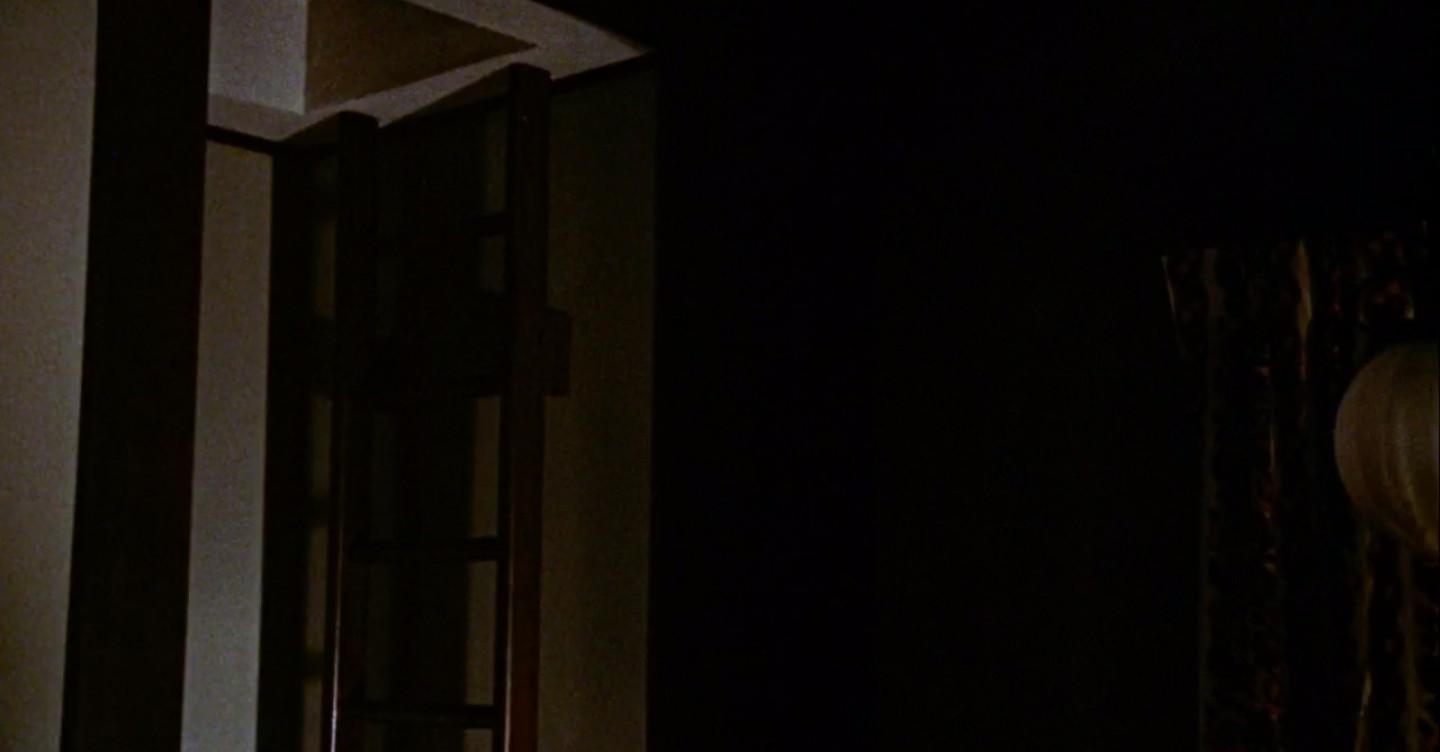
It’s Horror Week, so let’s talk about Christmas! Black Christmas, director Bob Clark’s 1974 film, is a slasher classic. Clark, who passed away in 2007, is a fascinating figure. Who else can credibly claim to have invented the teen sex comedy (Porky’s), the modern nostalgic Christmas movie (A Christmas Story), the graffiti action thriller (Turk 182!), and the modern slasher? Black Christmas is a pioneering genre film. If you’ve seen a slasher film, almost any slasher film, you’ve likely seen the tropes that Black Christmas created. Nowhere is the film’s influence more obvious than in 1978’s Halloween.






Christmas made three crucial contributions to the genre. It was the first horror film to use the (now extremely dated) “call is coming from inside the house” device, later made popular by When a Stranger Calls (1979) and repackaged for a new generation in Scream (1996). It was the first to introduce the concept of the identity-less killer: a character with no public-facing facade (à la Norman Bates), and no motive save for a desire to commit gruesome murder. (This, it should be noted, is also a useful way to keep a film budget down, since one doesn’t need a particularly enthralling actor to accomplish the effect.) And, most importantly, Christmas was the first slasher film to depict events from the killer’s first-person perspective.
“There’s no more important genre of shot in the history of horror,” Jason Zinoman, a writer and critic for The New York Times and the author of Shock Value: How a Few Eccentric Outsiders Gave Us Nightmares, Conquered Hollywood, and Invented Modern Horror, told me. This POV shift makes the violence tactile and turns the audience into accomplices. When interrogating the killer’s actions, we ask: Why are we doing this? Yet this technique also deepens our emotional connection to the always female protagonist who is both the hunted and the heroine. We watch through the killer’s eyes but we empathize with the would-be victim. And thus desperately want her to prevail.


Black Christmas opens with a shot of the outside of a sorority house, festooned with Christmas decorations. There’s a party going on within, and the camera peers through the windows at the young woman inside. This is our introduction to Jess, the protagonist. Next, we’re seeing through the killer’s eyes and hearing his ragged breathing. He finds a trellis, leading up to a second-floor window. His hand reaches out and up he climbs. This closely resembles Halloween’s iconic opening tracking shot in which we, the audience, see through the eyes of 6-year-old Michael Myers as he murders his sister.
Just how much John Carpenter’s Halloween borrowed from Black Christmas is the subject of much debate in horror circles. Carpenter was a fan of Black Christmas. He enlisted Clark to direct a script for a project titled “Prey.” During production for the never-released film, Carpenter asked Clark whether he intended to make a sequel to Black Christmas. Clark was always somewhat abashed at his work in horror and was ready to move on. “I didn’t come into the business to just do horror,” he said in an interview in 2005. OK, but if you were going to make one, Carpenter asked, what would you do? “I said it would be the next year and the guy would have actually been caught, escape from a mental institution, go back to the house and they would start all over again. And I would call it Halloween.”
Black Christmas and Halloween follow the almost folkloric template laid out by Psycho: a deranged male murderer, motivated by past trauma, stalks a place that is like home but often isn’t (a motel, a sleepaway camp, or, in this case, a sorority house and a neighbor’s home, respectively); his victims are mostly female, though he kills their male lovers and protectors; the violence culminates in a showdown in an enclosed space between the killer and the last survivor, who either kills the monster or escapes to freedom.


What sets Black Christmas apart, and why it deserves to be mentioned with Halloween and the other paradigm-altering ’70s slasher, Texas Chainsaw Massacre, is its complex and notably adult character work and themes. Today, the film feels more powerful and more present than it did even 10 years ago.
Usually, in horror, the heroine is either virginal (like Halloween’s Laurie Strode) or a tomboy (like Alien’s Ripley). In Black Christmas, the protagonist Jess has a boyfriend named Peter. Early in the movie we discover that she’s pregnant with his child. She tells him that she wants to have an abortion. Peter, who is studying to be a concert pianist, is against it. “You can’t do that, you haven’t even asked me,” he says. Jess is adamant. Black Christmas, it should be noted, was released in the U.S. the year following the Roe v. Wade decision.
Over the course of the film, Peter becomes increasingly erratic, destroying a piano with a microphone stand, breaking into the sorority house, and engaging in several heated and vaguely threatening arguments with Jess. The police, who have tapped the phone at the sorority house, overhear one of these. They, and Jess, come to suspect that Peter just might be the murderer stalking campus.



Late in the film, Jess, armed with a fireplace poker, flees to the basement. This is a well-worn convention of the genre, in which the last survivor flees to what seems like a place of refuge, but which quickly becomes a place of confinement and confrontation. The house grows quiet. Then a figure outside begins peering through the basement windows. It’s Peter. He breaks the window and comes in, searching for Jess, calling her name. When he finally finds her, she bludgeons him to death in self-defense. Of course, we soon discover that Peter wasn’t the killer.
What’s affecting about watching Black Christmas today is how effective the Peter feint is. He acts overly emotional, controlling, and selfish—dismissive of her agency. When she tells him that she’s thought through her decision to have an abortion quite carefully, he becomes petulant. He has a recital that day. “Do you know how important this afternoon is for me?” he asks. At the outset, his position seems, if not quite defensible, at least understandable. He wants to have a family, Jess does not, and he’s upset about it. When he presses her, again and again, on the issue, at one point sneaking into the sorority house, he thinks perhaps that he’s being romantic or saving Jess from making a horrible mistake. But as we’re given more access, via the first-person camera, to the murderer—who is no one and has no identity, only sputtering rage—Peter’s actions begin to seem more ominous, oppressive, and threatening.
The local police department is, for much of the film, dismissive of the threat posed by the obscene caller. And even when the police snap into action after the disappearance of a college student (a case they initially refuse to investigate) and the discovery of the body of a young girl, we find them wholly inept. (At times, comically so: At one point, the streetwise Barb, played by Margot Kidder, convinces an officer that the phone number for the sorority house is “fellatio.”) After they arrive to find Jess in the basement, Peter’s dead body sprawled on top of her, they take her upstairs and sedate her. What happened was obvious; no need to interview the survivor. After a while, they leave. Jess is alone in the house.
As Jess slumbers the camera pans across the hall. It pauses at Barb’s bedroom and we can see a mattress stained with blood. Then it pauses at the bedroom of Clare, the first victim. The effect, which Carpenter borrows for the end of Halloween, is terrifying in an elemental way. It creates an almost unbearable, primal feeling of vulnerability.






William Friedkin, the director of The Exorcist, once observed that the audience’s engagement with a horror movie begins when they’re standing in line. “Fear is generally something that is behind you,” he says in an interview in the book Dark Dreams: A Psychological History of the Modern Horror Film. “It’s generally something behind you that you cannot see but that you can feel, like a loud sound or someone touching you suddenly. Or it’s something behind the door that’s about to be opened.” The fear generated by a slasher film is powerful because it inhabits everyday spaces which should feel safe.
Black Christmas is often left out when discussing iconic slasher films. Carol J. Clover, in her landmark treatise on gender in horror movies Men, Women, and Chainsaws, does not mention the movie. Charles Derry’s Dark Dreams skips it as well. The film has fans among horror nerds, but it has largely been overlooked. “I tend to think that the reason Black Christmas gets less attention is because it’s a Canadian film,” the critic Zinoman said. “There’s less of a scene over there and it was easier for horror movies to get lost back then. If Black Christmas was made by a USC student and released here, history might have been different.”
History is what it is, unfortunately. A Black Christmas remake was released in 2006. This version delved into the backstory of the killer—a quite effective decision, if the intention was to make the film less scary. The original, however, remains a classic, ready to step out of the shadow of its more famous fellow slashers. Just in time for the holiday season.